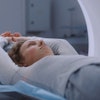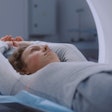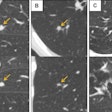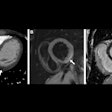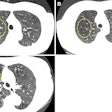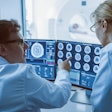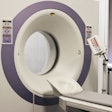
A new study published online in Radiology shows that patients want more information about medical radiation risks, but most would prefer to get it from the doctor managing their care, rather than a radiologist. This means that radiologists need to be more proactive in arming these physicians with information on radiation's risks and benefits.
As the focus on patient-centered decision-making continues to sharpen, physicians need to understand what information patients want and need, rather than assuming they already know, according to the group from Memorial Sloan Kettering Cancer Center (Radiology, March 24, 2015).
"We've known for some time, particularly as coverage of radiation errors has been published in the press, that the public is increasingly interested in medical radiation," lead author Dr. Raymond Thornton told AuntMinnie.com. "But we've assumed we know what patients want to know, and that's not necessarily true. So we sat down with patients and listened to what they had to say."
Focus on patients
Thornton and colleagues conducted six focus groups with subsets of patients based on cancer diagnosis, stage, and current disease status:
- Patients undergoing chemotherapy for stage IV colorectal carcinoma
- Women with early-stage breast cancer who had received up to six months of treatment
- Men undergoing surveillance imaging after treatment for testicular cancer
- Men and women enrolled in a thoracic cancer survivorship program
- Men and women enrolled in a lung cancer screening program
- Parents of pediatric patients who were treated previously for stage I-III neuroblastoma
The focus group sessions were 90 minutes long, consisted of up to six patients, and were moderated by a group facilitator. Either a radiologist or a medical physicist also attended and was available to answer questions at the end of the session. In total, 30 individuals participated in the study, and each received $25.
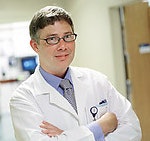 Dr. Raymond Thornton from Memorial Sloan Kettering Cancer Center.
Dr. Raymond Thornton from Memorial Sloan Kettering Cancer Center.The moderator used a focus group guide to assess participants' knowledge of, attitudes about, and information sources for medical imaging examinations that involve the use of radiation. They also assessed the participants' satisfaction with risk-benefit communication, as well as their desire for information about medical imaging.
Through the focus groups, Thornton's team discovered that patients understood there were clear benefits to imaging exams such as x-ray, CT, and nuclear medicine studies, but also that there were risks associated with ongoing exposure to radiation.
"Participants described the primary benefit of imaging tests such as CT to be noninvasive diagnosis and early detection of disease," Thornton and colleagues wrote. "Those whose cancers had been detected by means of imaging associated very high value to imaging and felt no need to inquire about long-term risks from ionizing radiation."
But patients' knowledge about which imaging tests involve the use of ionizing radiation varied dramatically -- and was generally poor. Focus group participants understood that x-ray, CT, and PET exams deliver ionizing radiation, but they were unsure if radiation is used in mammography, bone scanning, stress tests, and MRI. They were also unclear about how tests differed from each other, the benefit one imaging test had in relation to another, and which imaging exams dispense the highest radiation doses.
Some focus group participants believed that there was one best imaging test.
"We had patients saying, 'I just had a CT and now I'm supposed to have a PET scan or an MR. Isn't there one test that could do everything?' " Thornton said.
Need the info
Patients in the survivor phase of their disease in particular wanted more information about how radiation risk accrues over time and why particular tests are recommended, study co-author Jennifer Hay, PhD, told AuntMinnie.com.
"Our focus group participants wanted to know why particular tests were being recommended and how the risk of radiation exposure increases over time," she said. "Some patients, especially cancer survivors, worried that continued exposure to radiation through biannual CTs, say, would increase their cancer risk, when they're already at increased risk for secondary cancer just because they had cancer in the first place."
Finally, Thornton and colleagues found that patients preferred to get information about medical imaging and radiation from their oncologist, rather than a radiologist. Also, they believed this type of discussion did not occur because of time pressures during clinic visits.
"Patients want to know about risk, but they want to get that information from their own doctor, the one with whom they already have a relationship," Thornton said.
The study findings suggest that patients would appreciate more written references about medical imaging, including Internet-based ones that can be linked to patient portals, in addition to face-to-face conversations with their physician. Resources for referring physicians are important as well, Thornton's group noted.
"Authors of multiple studies have shown that as many as one-third of nonradiologist physicians cannot distinguish imaging examinations for which ionizing radiation is used from those for which it is not, and most do not understand the dose of ionizing radiation associated with common imaging examinations or the corresponding risks," the authors wrote.
Perhaps information about radiation and medical imaging for nonradiologist physicians could be better integrated into medical education, Hay said.
"Written and Web materials for primary-care physicians could help them feel more capable of handling these conversations when they come up," she told AuntMinnie.com.
The bottom line is that patients want to know more, Thornton and colleagues wrote. Ample opportunities exist to address patient concerns about seemingly duplicative studies by helping them understand how different imaging tests can provide different information about the same anatomy.
"The degree to which study participants wanted to learn more than just benefit-risk information about medical imaging tests was striking," the authors concluded. "Radiology departments should develop patient education materials on this topic and make them available."

